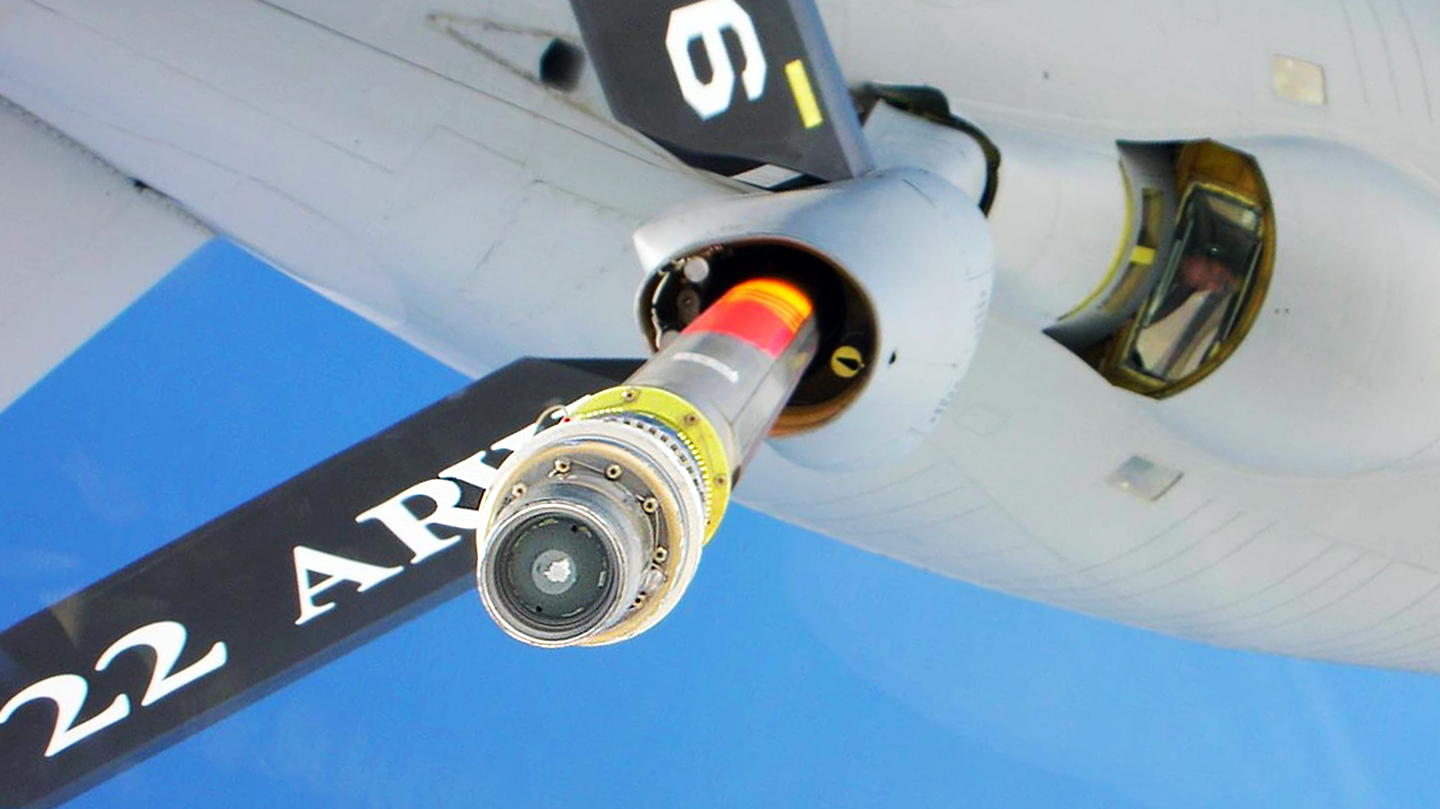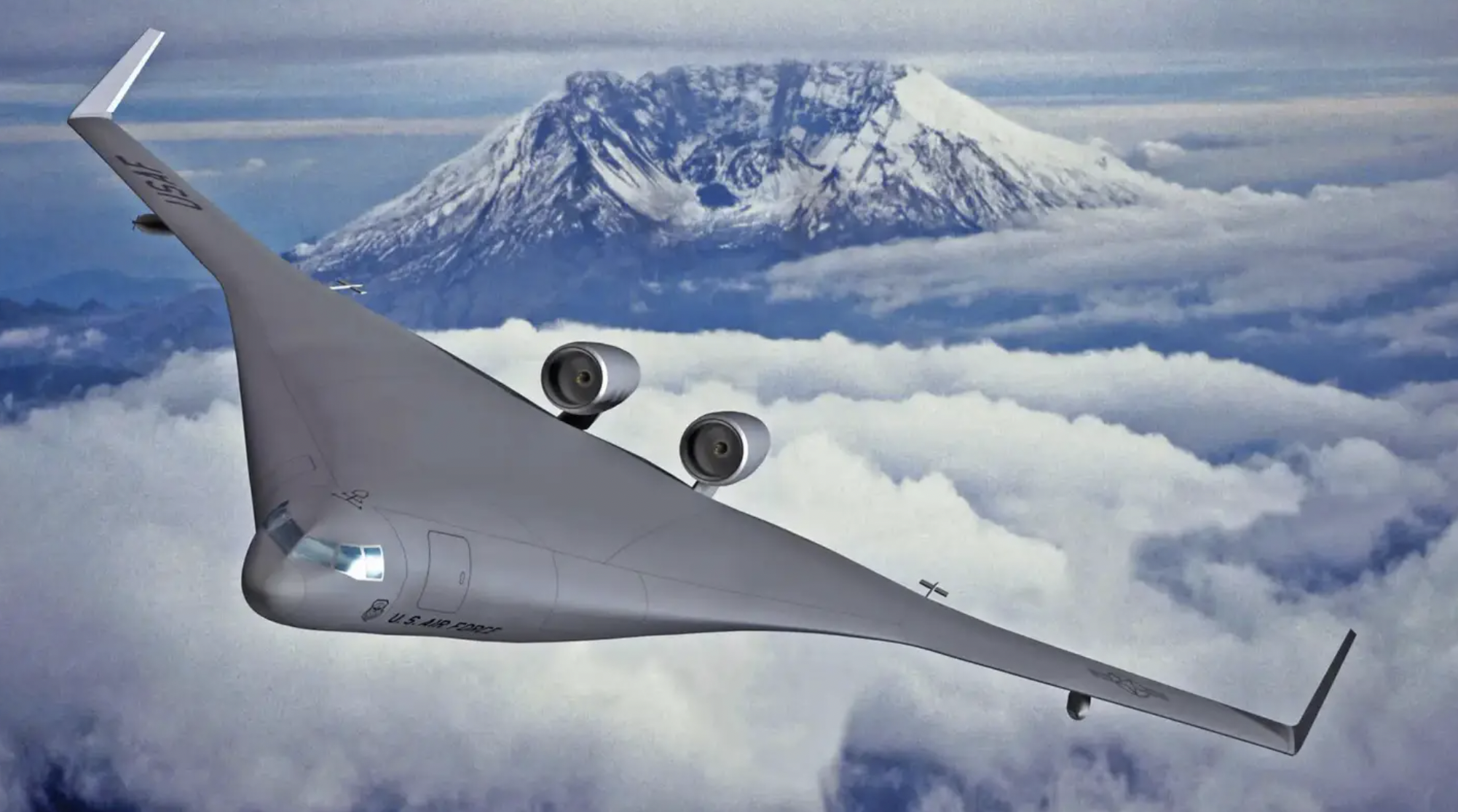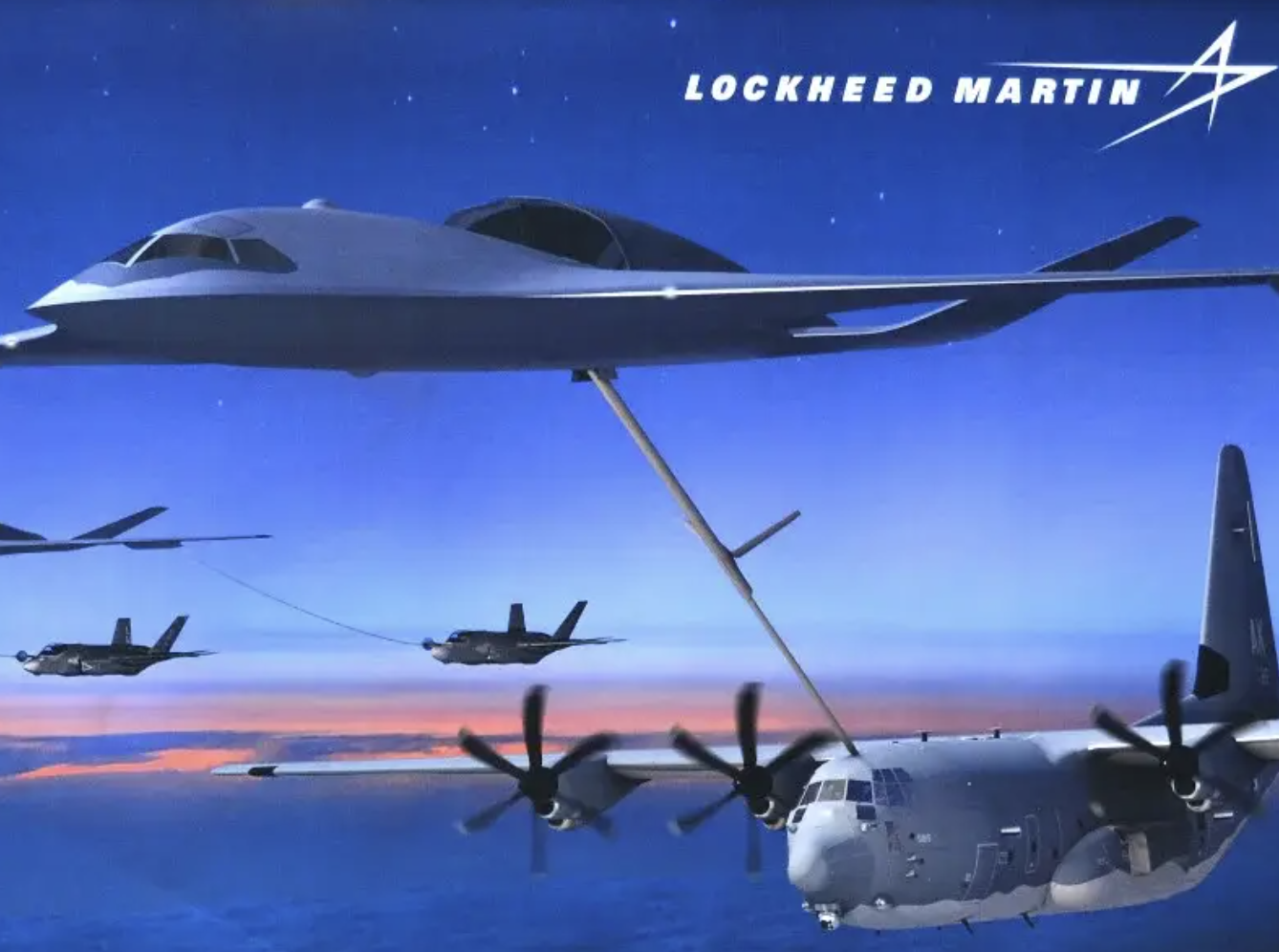The United States has completed the design of what’s described as a “small, pod-mounted tactical air refueling boom” that could end up on future transport aircraft, as well as potentially other platforms like drones.
The concept of a podded refueling boom has been around for a while now, but this seems to be the first sign that the U.S. Air Force is now much more serious about the program. This is especially interesting as the service is starting to weigh options for future tanker capabilities, with a particular eye on tanker survivability in and around more contested airspace.
News of the completion of design work on the podded air refueling boom was provided in the Pentagon’s Budget Estimates for Air Force Research, Development, Test, and Evaluation, released earlier this month. Very little other information is provided, meaning it’s not clear exactly what kind of design work has been accomplished so far or who the responsible design authority is. It could be that the design has been finalized, but that the podded boom exists still so far only as a ‘paper project.’ Alternatively, it might be the case that it’s already progressed to the hardware stage — and perhaps has even undergone some degree of testing in a physical environment, be it on the ground or in the air, or a virtual one.

At this stage, we simply don’t know for sure, but it’s clear that design work on the project is considered complete up to at least a certain stage. The Air Force’s proposed budget for the 2024 Fiscal Year says explicitly that this is why it is requesting $7.318 million for this project this year. This is around $757,000 less than what it asked for to continue this work in Fiscal Year 2023.
There are only a few clues about what kind of aircraft the podded boom is intended to be carried by and these are somewhat contradictory, at first sight. The Budget Estimates document describes the pod as being intended for “future Mobility applications,” which suggests that it will be used by (manned) transport aircraft or derivatives of them. At the same time, the pod is said to be “small” and “tactical,” both of which would seem to indicate it’s to be fitted to smaller aircraft types, which might include drones.

The potential for drones to be used as tankers once equipped with podded booms is something The War Zone has explored in the past.
In the meantime, the U.S. Navy is busy developing its own concepts of operation for unmanned tankers. However, its fleet of MQ-25 Stingray drones is configured to provide fuel via a podded probe-and-drogue aerial refueling method, rather than the Air Force’s boom method. It is worth noting that podded probe-and-drogue systems capable of being carried by tactical combat jets and similarly-sized aircraft have been in service for decades.

Regardless of if a production version of the podded boom finds its way onto a future manned or unmanned tanker, or another aircraft, for that matter, the Air Force is now seriously looking at how it will meet its requirements for a Next Generation Air-refueling System (NGAS) — previously referred to as KC-Z. Earlier this year, the service confirmed it wants to have a new fleet of tankers in service no later than 2040, and earlier if possible.
The Fiscal Year 2024 budget proposal from the Air Force says that the current plan is for the project to fund both the delivery of “upgraded capabilities in multiple types of tankers (increments) by leveraging benefits of full and open competition” and eventually lead to “a clean sheet, purpose-built design effort that will garner advanced technologies to ensure air refueling in a contested environment to address projected future threats and needed capabilities.”
“NGAS will develop, field, and sustain warfighter refueling capabilities to meet evolving threats and mission support requirements through Block or discrete modification or modernization programs depending on mission urgency, available funding, and programmatic and technical risks,” the latest budget request adds.
The Air Force is seeking just under $8 million for NGAS in its Fiscal Year 2024 budget, primarily to support work to complete a so-called Analysis of Alternatives (AoA) to help finalize its requirements for the program.
So far, we don’t know what an NGAS tanker might look like and the Air Force itself is still considering different possibilities. However, both Lockheed Martin and Boeing have displayed advanced tanker concepts that feature blended wing-body planforms that would offer at least a degree of stealth, a requirement that we have highlighted in-depth in the past in relation to aerial refueling specifically. This would be one potential avenue to meeting the Air Force’s requirements for a tanker better able to survive in contested airspace scenarios.

Earlier this year, Boeing unveiled another new stealthy BWB concept, which is currently designed around the tactical airlift mission. It’s possible that it, too, could be adaptable to aerial refueling in the future.
To preserve, as far as is possible, the low-observable characteristics of a tanker of this kind would likely involve a fully retractable or at least a conformal refueling boom, however, rather than a podded solution, which would significantly increase the radar signature. On the other hand, some of the BWB concepts we’ve seen so far offer a degree of low observability but certainly wouldn’t be classed as as stealth aircraft. For these, a podded refueling boom would make more sense.

It could well be that the podded boom is being envisaged for a tanker drone. And while the aforementioned document mentions “future Mobility applications,” we know from previously released information that the Air Force is looking at “innovative solutions in all size and performance classes” to meet the NGAS requirement.
A drone tanker with a podded boom would not have to be stealthier or generally more survivable than a manned blended wing-body tanker, for example. That might not necessarily be such a concern. It could be that a drone tanker, paired with emerging tactics and technologies, could be risked more freely in high-threat scenarios. On the other hand, a smaller drone tanker would offer only a fraction of the fuel available for offload compared to more conventional Air Force refueling assets.
There’s a much smaller chance that Air Force might find a use for a podded boom even before NGAS becomes a reality, namely in its KC-Y or “bridge tanker” initiative. The Air Force announced in March that it had officially done away with KC-Y, which was intended as an interim tanker to follow the KC-46A Pegasus that’s now in production and service. The service said it had replaced it with a truncated version of that original plan and that it would likely seek to simply acquire 75 additional KC-46As to meet that need.
The Pegasus is a traditional non-stealthy adaptation of the 767 commercial airliner design, but its introduction has suffered from more than its fair share of problems, as you can read about here. Members of Congress have previously criticized Air Force leadership for previous plans to effectively kill the bridge tanker plan and simply buy more KC-46As without holding some kind of competition.

Meanwhile, Lockheed Martin has been pushing a rival design, the Airbus A330 Multi-Role Tanker Transport (MRTT) dubbed the LMXT. Depending on how Congress responds to the Air Force’s new plans for its follow-on to KC-Y, another alternative off-the-shelf platform utilizing a podded boom could at least be a possibility.
After all, a podded boom concept introduces the possibility of adapting various platforms into tankers. Unlike an integral boom, it also offers the advantage of being compatible with smaller flying vehicles, manned or otherwise, or pilot-optional designs, for that matter. Larger aircraft, such as transports, could potentially also leverage its capabilities and add to the USAF’s overall tanker capacity.

Indeed, the apparent versatility of the podded boom might well make it especially interesting for the Air Force at this point, as it weighs up what its future tanker, or tankers, will look like, as well as deciding on how best to ensure aerial refueling capabilities in increasingly dangerous airspace. At one point, it seemed that the Air Force favored an unmanned design with a podded boom for what was then known as KC-Z, although other options now appear to be on the table.
Based on the details in the 2024 budget request, there is also the possibility that there could be multiple NGAS platforms in the end, including modernized versions of existing aircraft. While some of the larger advanced blend wing-body-like designs that we’ve seen might not necessarily be the best candidates for a podded boom, having this option would seem to open up other possibilities, including smaller manned tanker aircraft and drones. Such a mix could make up a ‘cocktail’ solution to the USAF’s future tanker needs.
There have already been some efforts made toward outfitting smaller transport aircraft and hose-and-drogue tankers with a refueling boom, notably the Brazilian multi-role KC-390 tanker-transport, which has been offered with a boom refueling system.

This has been pitched as a tactical tanking solution optimized to fly closer to the front lines and operate from austere bases. While this proposal involved a fully integrated boom in the rear fuselage, a podded boom could ease the process of integration onto a wider variety of aircraft, including smaller tactical transports.
You can read our full report on a USAF-specific KC-390 and its potential concept of operations here.
We have previously explored the potential for the Air Force to field a future mixed tanker fleet, including larger and more survivable types, perhaps with low observable features, to operate just outside the range of enemy threats. These could then offload fuel into smaller tanker drones that then head out closer to the actual fight, where any resulting losses would be more acceptable.
In the meantime, there are other options that could help improve existing tanker survivability, such as enhancing their situational awareness via upgraded communications and defensive systems. This could include self-defense pods that incorporate electronic warfare and decoys. Hard-kill and laser defenses are also possibly on the horizon. Also being eyed are self-protection drones to accompany and defend tankers, while expanding lower-level refueling operations can also buy back some level of survivability, but it has its own penalties.

Regardless, the USAF has built its tactical combat aircraft inventory based on aircraft that feature ranges (combat radius) measured in hundreds of miles. In some cases, it’s low hundreds, which would put the tankers deep into China’s anti-access umbrella. The service is finally trying to change this with future tactical aircraft programs, like NGAD, where a platform’s range is a much larger design driver. A larger long-range stealth bomber fleet, as well as more standoff weapons, is also part of the solution. But the tanker vulnerability problem is remarkably stark and quite perplexing.
With all this in mind, the kinds of high-intensity conflict against a potential near-peer adversary like China that the Air Force is now envisaging clearly present enormous problems for aerial refueling tankers — traditional ones, at least. It may well be that the intriguing pod-mounted tactical air refueling boom, the design of which is now complete, could help address this challenge.
Contact the author: thomas@thedrive.com
